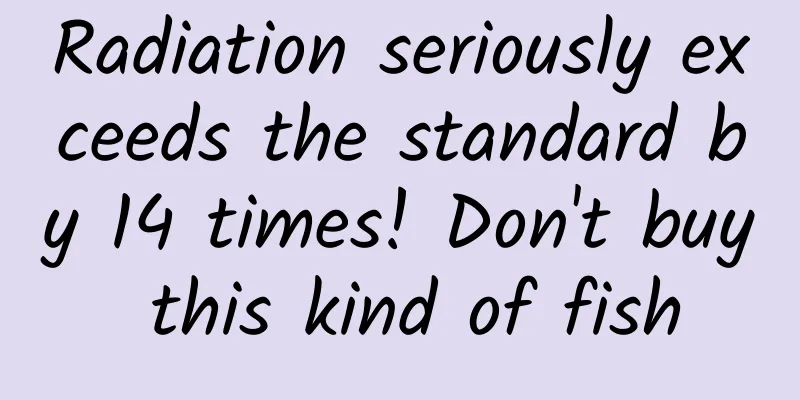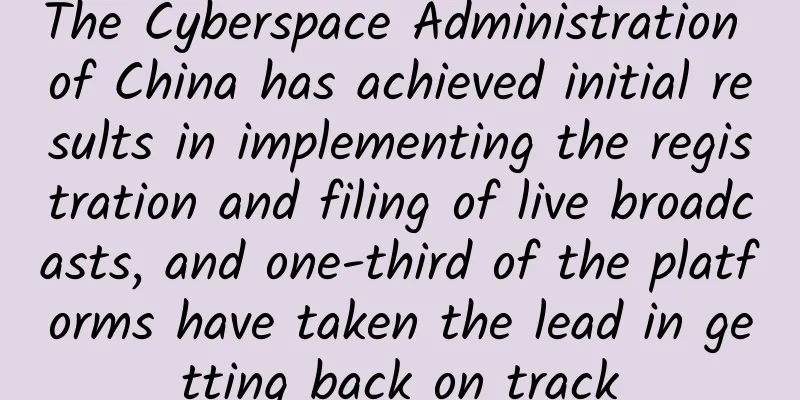Radiation seriously exceeds the standard by 14 times! Don't buy this kind of fish

|
A marine fish called "Hiroshima scorpionfish" caught off the coast of Fukushima Prefecture, Japan, was recently found to have serious excessive radiation levels. On the 8th, the Japanese government again instructed Fukushima Prefecture to suspend the sale of this marine fish. A species of marine fish near the coast of Fukushima Prefecture, Japan, was found to have radiation levels seriously exceeding the limit △ CCTV Finance "World Finance" column video According to a message released by the Ministry of Health, Labour and Welfare of Japan on the 8th, the test results as of the 7th showed that the activity of radioactive cesium contained in the "Scorpionfish" caught near the coast of Fukushima Prefecture reached 1,400 becquerels per kilogram, far exceeding the Japanese food hygiene standard of 100 becquerels per kilogram. In fact, the "Hyderabad scorpionfish" caught off the coast of Fukushima Prefecture had excessive levels of radioactive substances in February and April last year, and their sale was temporarily suspended. However, the suspension was lifted in December last year. According to previous reports by Japanese media, after the accident at the Fukushima Daiichi Nuclear Power Plant of Tokyo Electric Power Company, the Japanese government suspended the sale of up to 44 types of seafood in the waters near Fukushima Prefecture, but these restrictions were later lifted one after another. The 2011 "3.11" earthquake caused the core melt of the Fukushima Daiichi Nuclear Power Plant and the leakage of radioactive materials. The continuous core cooling operation and the influx of rainwater and groundwater into the reactor facilities produced a large amount of nuclear wastewater, which is increasing. In April last year, the Japanese government, despite strong opposition at home and abroad, decided to discharge millions of tons of nuclear wastewater from the Fukushima Daiichi Nuclear Power Plant into the sea after filtering and diluting it. TEPCO restarts internal investigation of containment vessel at Fukushima Daiichi nuclear power plant Nearly 11 years have passed since the Fukushima nuclear accident. Yesterday, Tokyo Electric Power Company restarted its internal investigation into the No. 1 unit of the Daiichi Nuclear Power Plant, but the decommissioning of the entire nuclear power plant is still nowhere in sight. The building next to the reporter near Tokyo Shinbashi Station is the headquarters of Tokyo Electric Power Company. Yesterday, TEPCO reopened the investigation of nuclear residues inside the containment vessel of Unit 1. Due to the high radiation level inside the containment vessel, the investigation was conducted by remotely controlled robots. As a preliminary preparation for the decommissioning of the nuclear power plant, the investigation was originally scheduled to be carried out last month, but it was stopped after just over two hours due to a technical failure. It is expected that the entire investigation after the restart will last about seven months. In the Fukushima nuclear accident, the reactor cores of units 1 to 3 of the Daiichi Nuclear Power Plant all melted down, and a large amount of nuclear residue was formed, which became the biggest obstacle to the decommissioning work. More than a week ago, the robotic arm used to remove the nuclear residue finally arrived in Fukushima, and it will be put into operation within the year at the earliest. Although TEPCO said it would complete the decommissioning work within 40 years of the nuclear accident, Japanese media questioned that this process might take longer and the prospects are unclear. Another legacy of the Fukushima nuclear accident - the treatment of nuclear contaminated water - is even more controversial. Facing questions and opposition from both home and abroad about the plan to discharge nuclear contaminated water into the sea, TEPCO has been stepping up its publicity efforts and has released a brochure claiming that the practice of discharging into the sea has minimal impact on the human body and the environment. On the 14th of this month, the International Atomic Energy Agency will send a team of experts to Japan to conduct an investigation in Fukushima to verify the safety of the plan to discharge into the sea. The third legacy of the Fukushima nuclear accident is that a large number of local residents have left their homes, and the number is still more than 27,000. Although the Japanese government will continue to lift residential restrictions in some areas around the nuclear accident this spring, a survey shows that only about 10% of Fukushima refugees are willing to return to their hometowns. Source: CCTV Finance (ID: cctvyscj) |
<<: Scientific rumor-busting | The chemistry in fireworks and firecrackers
Recommend
A comprehensive analysis of product operations!
If a product is produced but cannot fully reach u...
Creative promotion of information flow, use these two tricks to get Buff immediately
Whether we are sales or marketing personnel, we h...
WeChat Moments Advertising- Charging Strategy
Moments ads support two purchasing methods: sched...
2020 Short Video Live Streaming Operation and Monetization Guide
After Wangfujing Department Store and other shopp...
Mangosteen is in the soil, strawberries are on the tree... How magical can live streaming sales be? !
In recent years Live streaming sales becomes a tr...
He chases his dream of deep blue sea with the wind blowing on the sea
"A seagull flies thousands of miles on the w...
There is no need to feel sorry for the crackdown on TV boxes. There will be replacements.
For the State Administration of Radio, Film and T...
Milking cows? You heard it right! Learn more about “humanized milk” →
Breast milk is the safest and most nutritionally ...
Want a “screen-sweeping” promotion for NetEase Music? Here are 8 ways
Why does the traffic increase when users are mock...
Domestic mobile phones have entered the wrong path of "cost-effectiveness"
[[143498]] When it comes to domestic mobile phone...
Known as the "National Seashore Scenic Byway No. 1", what is the origin of this road?
Roads are the main arteries of a city. From the a...
Case Analysis | Alipay Huabei’s Marketing Tactics on Double 11 and Double 12
How does Huabei use various content marketing for...
Adobe China employee reveals the inside story of its closure
Many people say that the layoffs are due to poor ...
Are primary and secondary school students addicted to "nasal energy bars"? The more they inhale, the more addicted they become?
Recently, two primary school students in Tianjin ...
Yinchuan gas explosion caused 31 deaths and 7 injuries! You must know these life-threatening firefighting knowledge!
On the evening of June 21, a gas explosion occurr...









